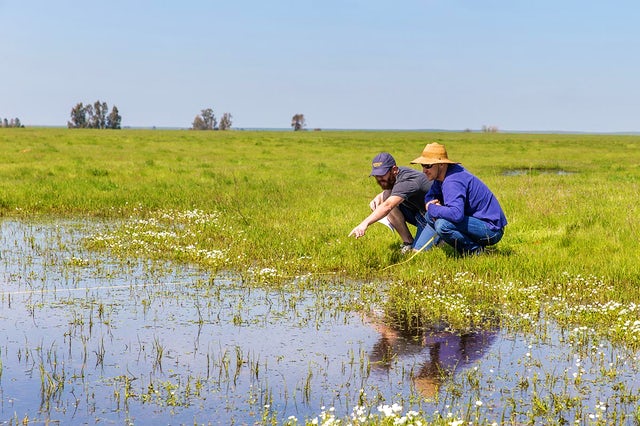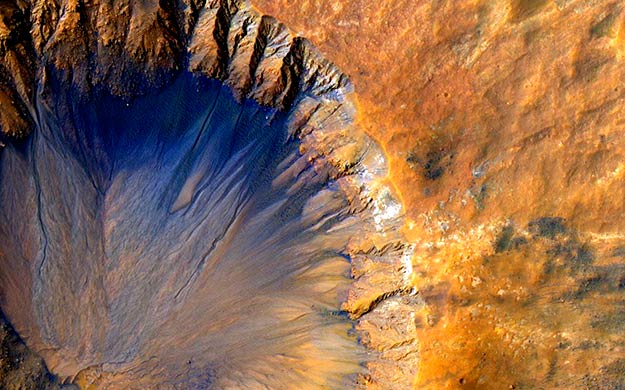In an effort to improve water management, the University of California will install sensor networks across various protected habitats to predict how freshwater moves, biology professor Todd Dawson explains.

Researchers at Merced Vernal Pools and Grassland Reserve, one of many research sites owned by the University of California
CALIFORNIA IS ABOUT to learn a whole lot more about how water moves through its many diverse landscapes.
The Gordon and Betty Moore Foundation has awarded a $2.2 million grant to the University of California to use remote sensors and drones to monitor hydrology across various landscapes. The subject areas will be the U.C.’s Natural Reserve System, a network of protected lands covering more than 750,000 acres and representing many habitat types in the state.
Called the California Heartbeat Initiative-Freshwater, the project will equip reserves with wireless sensor nodes to track weather, soil moisture, transpiration and a host of other criteria. Each node, about the size of a thermos, is outfitted with a battery and solar panel. They communicate wirelessly with each other and a central computer. Drones will fly programmed routes with special cameras attached to monitor how vegetation changes with the climate. Read more












